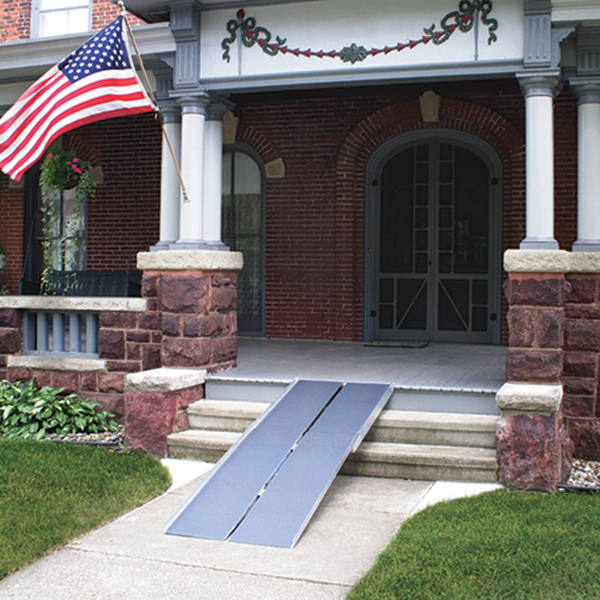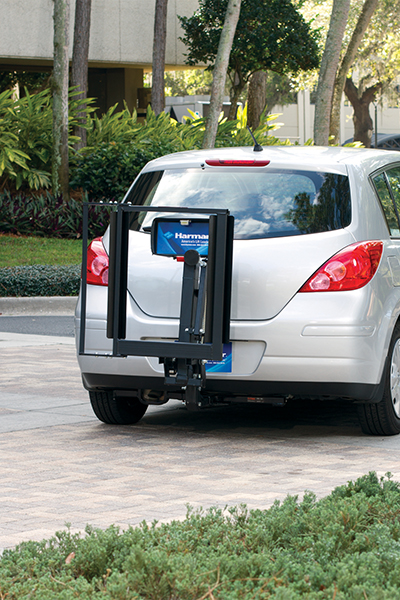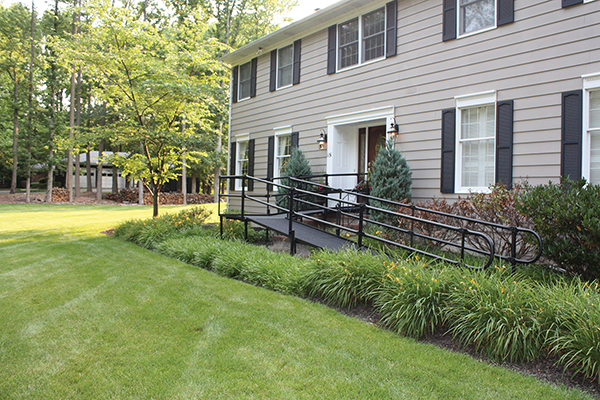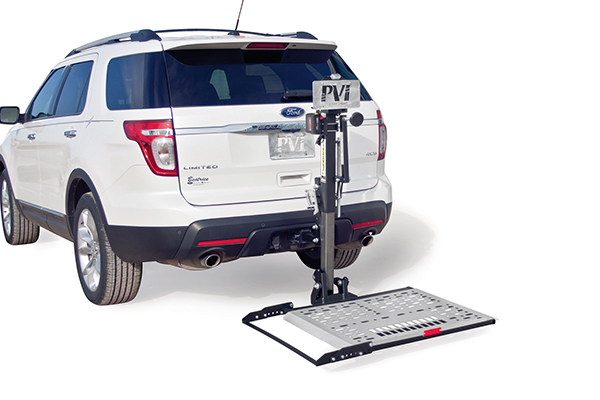As Round 2 of competitive bidding continues to cast a shadow of uncertainty over several types of HME, the product category of lifts and ramps remains an increasingly tempting option. Blissfully free of the entanglements of Medicare, Medicaid and even most private insurance, the equipment falls squarely into the cash-based realm.
For manufacturers, competitive bidding is an undeniable factor that drives demand as providers seek to reduce their reliance on government payers. However, Jenifer Burke—owner of AlumiRamp in Quincy, Mich.—is quick to point out that fewer providers will not help the overall market.
“We are concerned that such drastic cuts of competitive bidding will affect the feasibility of business for a lot of dealers,” she says. “Unfortunately, we have already seen an increase in the number of dealers going out of business over the last several years.”

Creating a Demand
Government policy has shifted the market toward cash-based products and services, and it remains to be seen how long that trend will continue. M.J. Sonnenfeld, vice president of marketing at Prairie View Industries in Fairbury, Neb., echoes a familiar sentiment as he tallies positive sales numbers in a distinctly troubled climate. “Competitive bidding has created a demand for our products,” he muses. “We’ve seen an influx since Round 1 of dealers wanting to get more into cash sales business. We hate to see dealers suffer, but it has pushed them toward cash sale products such as ramps.”
 The shift from reimbursed to non-reimbursed products will likely accelerate in the coming years, and a diverse selection will become ever more important. “We sell a mobility portfolio, including vehicle lifts for power chairs and scooters,” says Paul Johnson, vice president of sales, marketing and service at Harmar in Sarasota, Fla. “We also make a portfolio of accessibility products that includes stair lifts and vertical and incline platform lifts. We also manufacture residential elevators.”
The shift from reimbursed to non-reimbursed products will likely accelerate in the coming years, and a diverse selection will become ever more important. “We sell a mobility portfolio, including vehicle lifts for power chairs and scooters,” says Paul Johnson, vice president of sales, marketing and service at Harmar in Sarasota, Fla. “We also make a portfolio of accessibility products that includes stair lifts and vertical and incline platform lifts. We also manufacture residential elevators.”
A full selection of lifts and ramps is crucial, but Johnson believes too many providers fall back on familiar products without knowing what is new and exciting. “The vehicle lift segment is a great example,” he says. “If you quote the same product every time somebody walks in, that is a big mistake. We’re innovating products every day, and the portfolio grows broader and deeper. Providers need to become experts in these products and really understand them. Just selling the same old thing is a business risk.”
Harmar offers twice-monthly dealer training sessions to expand provider knowledge. Additional training aimed at doctors and therapists can lead to valuable referrals. “We are helping dealers offer continuing education courses to train on products and know what is needed to recommend solutions,” Johnson explains. “Patients must be able to get in and out of the house and be mobile, and that’s where lifts and ramps fit in. The biggest opportunity an HME has is to create awareness among therapists and patients, because there is a substantial market opportunity out there.”
Solid Demographics
Karen Riker, director of sales and marketing at American Access, Inc., laments the negative effects of the competitive bidding program, but she believes that demographics will drive the market forward. The Tennessee-based company has a healthy business outlook for 2013, a confidence that Riker attributes to growing need among consumers who are willing and able to pay cash.
“Consumers today are accustomed to shopping for and purchasing products in a traditional way,” she says. “Using turnkey sales and promotional tactics that make the buying experience simple and convenient advances the lift and ramp landscape, allowing consumers to make confident choices on their terms. Lifts and ramps as a product category are game-changing sources of growth for HME providers under any conditions.”
Garth Walker, managing director at National Ramp Corp. in West Nyack, N.Y., agrees that demographics will fuel the market, and consumers will consistently come up with the money and motivation to purchase lifts and ramps. “One of the biggest misconceptions is that ramps are too expensive for homeowners,” he says. “We have been able to overcome this by giving our dealers different choices for different budgets.”

“Our portfolio of products is growing, and not with new product types, but with new product models,” Johnson adds. “We have new, more refined models of vehicle lifts. We also have different types of stair lifts, and newer models of vertical lifts. The expansion of our existing portfolio is the way we’re growing this year.”
Affordable Solution
Walker acknowledges that many providers have “taken a look at the consequences of building their business on Medicare and competitive bidding” and would like to diversify. However, he cautions that the business requires a different approach than traditional product categories.
“The sale and installation of lifts and ramps is a totally different business model than selling consumables or oxygen,” says Walker. “So, while there is a lot of interest, there are only a few that are actually committing time and money toward this diversification.”
Despite its cash status, providers have occasionally shied away from lifts and ramps, fearing the complexities of the business. Manufacturers such as Prairie View Industries have addressed this hesitancy with programs designed to make market entry easier. “We call it A2A, which stands for Assess to Access,” explains Sonnenfeld. “It allows dealers to use our network of installers to sell one of their customers a modular ramp, without having to know how to install it, take pictures and do the assessment. All the dealer does is contact us and say, ‘I have a customer who needs a modular ramp.’ We take it from there.”
Don Everard, CEO of EZ-ACCESS, points out that equipment and price point variety are also important. “Modular and portable ramps are low cost, low impact solutions,” he says. “However, in many cases there is limited space, and a lift is a better solution.”
Whether providers take it upon themselves to gain expertise or rely on others, determining the correct solution is imperative when dealing with the home environment. In addition to a solid variety of reliable lift/ramp options, there are ways to make money beyond selling, particularly in situations that involve short-term need.
“One area we have found most effective with both lifts and modular ramps is rental,” Everard explains. “Dealers are able to help someone with a limited or fixed income afford a lift or modular ramp, making these product options a more attractive solution.”
“Another issue we see is dealers expecting to be able to charge full retail on portable ramps,” adds Jenifer Burke. “With the amount of competition through the Internet, this is often no longer feasible. Dealers need to take this into account when they look at offering ramps.”
Competitive pricing, knowledgeable providers and diverse equipment options are all important, as is good old fashioned salesmanship. “It’s a big mistake to believe the product sells itself,” says Johnson. “If you are not asking every customer about accessibility needs and ramps, customers typically won’t bring it up. They will get home and contact a family member to build them a ramp. The biggest mistake is not bringing it up with every single customer.”
Fortunately, market experts believe the business is far from oversaturated, and plenty of patients—and their caregivers—will be looking for those solutions. “The category is getting crowded, with many new companies entering, but we are quite confident that the aging population creates opportunity for growth,” says Everard. “The key will be working with dealers to market themselves as home modification and accessibility specialists. With the support of The VGM Group and Accessible Home Improvement of America, we are working hard to help dealers gain the knowledge and confidence needed to include home modification, lifts and ramps in their offerings.”
As for inventory, Everard maintains it is a mistake to not have product on-hand. “Ramps and lifts are readily available on the Internet, and lost opportunity usually stems from not making the sale at first visit,” he says. “Customers are looking for dealers to be experts, and having product to demonstrate and sell will increase their closing rate and better serve customers.”
Appealing Market
 Ultimately, the absence of lifts and ramps from competitive bidding, combined with the undeniable market demand, has combined to make this market sector appealing to today’s providers. But what if a proposal came down the pike to enact Medicare coverage for lifts and ramps? Would providers and manufacturers be for or against?
Ultimately, the absence of lifts and ramps from competitive bidding, combined with the undeniable market demand, has combined to make this market sector appealing to today’s providers. But what if a proposal came down the pike to enact Medicare coverage for lifts and ramps? Would providers and manufacturers be for or against?
Medicare coverage would no doubt expand the market, but would it be a net gain for manufacturers and providers? Sonnenfeld is not so sure. “Medicare would be a double-edged sword,” he muses. “It would open up more customers for the industry, but also more headaches. I think we are fairly content with where we are. We’d love to be able to bring access to more people, but it’s also nice to have a cut-and-dried cash sale.”
Access Online
AlumiRamp
www.alumiramp.com
American Access
www.aaramps.com
EZ-ACCESS
www.ezaccess.com
Harmar
www.harmar.com
National Ramp Corp.
www.nationalramp.net
Prairie View Industries
www.pviramps.com




